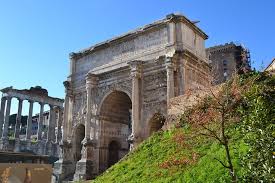Ancient Roman Décor of Apartments: Romans developments in housing and public hygiene were quite impressive, especially given their day and age. Clear examples were the public as well as private baths and latrines, and under-floor heating in the form of the hypocaust, double glazing and piped.

Roman Insulae
The most impressive urban planning was the multi-story apartment blocks called insulae that catered to a wide range of residential situations. These buildings, solely intended for large-scale accommodation, could reach several floors in height.
Insulates were often dangerous, unhealthy, and prone to fires. There are examples in cities like the Roman port town of Ostia, that date back to the reign of Trajan and show how Roman architects met residential needs in a variety of situations.
Ancient Roman Housing
For example, the Via Della Focette was a large-scale real estate development that catered to up-and-coming middle-class entrepreneurs. Rather like modern semi-detached housing, these residences had repeated floor plans intended for easy, economical, and repetitive construction.

Internal spaces were designed to be relatively low-cost, yet functional and with decorative elements reminiscent of the detached houses and villas to which the buyers might aspire later in their lives.
Roman Décor of Apartments
Each apartment had its own terrace and private entrance. External walls were in “Opus Reticulatum” and interiors in “Opus Incertum”, which would then be plastered and sometimes painted. Some existing examples show that a popular choice of interior decor was to paint panels in alternating red and rainbow.
Ancient Roman Décor of Apartments were bright colors and minimal decorations were common in small and simple houses of ancient Rome. Decorative art and Romanesque architecture were already evident in the beautiful buildings and wealthy homes seen around 2,000 years ago.
Roman House Design
By 1200s, the wealthy and the noble were great sponsors of decorative art that saw the flourish of more frescoes and paintings, sculptures, marble and mosaic designs, fine textiles, precious jewelry, porcelains, glassware, and ornately-designed furniture which could be found in homes and palaces.
Pieces of furniture were not that much popular or in use during those times, but chests, wooden cabinets, the rare water clock, and brazier for coals came off as the basic Roman furniture in most homes then.

The highly ornate couches or ‘Lectus’ were also very popular and a twin use namely as a bed as well as a sofa. They were made of wood with a mattress, pillows, and coverlets and designed with interwoven straps across the top, one or two arms, and a solid back. They were initially stuffed with straw, wool, and feathers.
Some of the ancient doors, pillars, and floors were ornately designed. There were four-legged stools or benches common during those days of which some were foldable. The popular curule was one and it was designed with curved ivory legs and stuffed with a purple cushion.

Its improved version was the straight and high-backed Solium with solid arms and normally used by patrons and often referred to by old poets as the seat of kings and gods alone. Subsequently came the armless and curved-back cathedra. Initially, only women could use it until eventually anyone else could.
More info on- Roman houses



